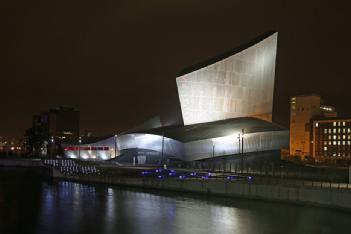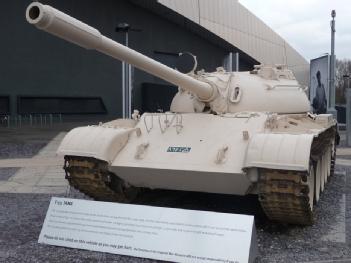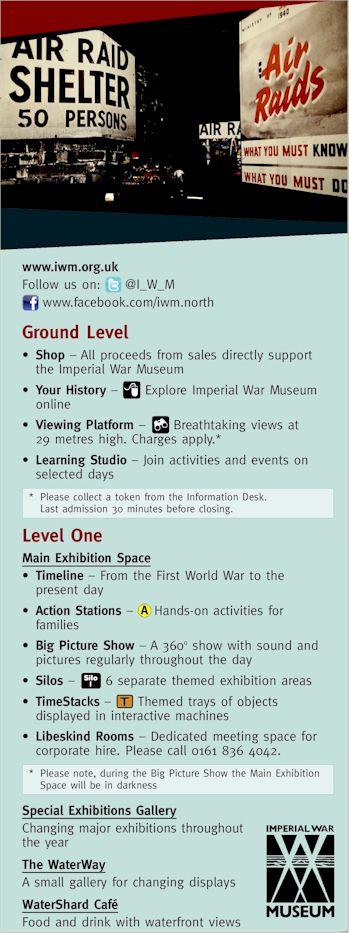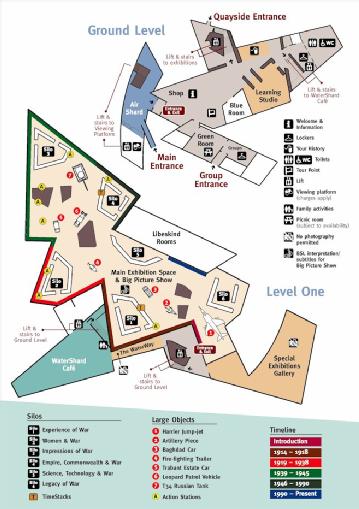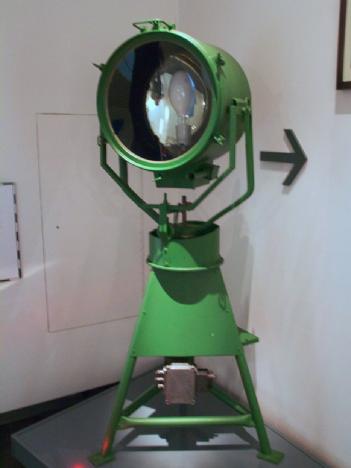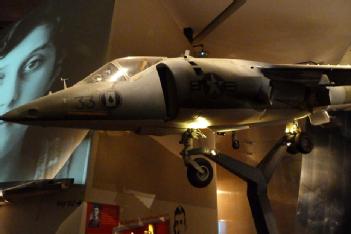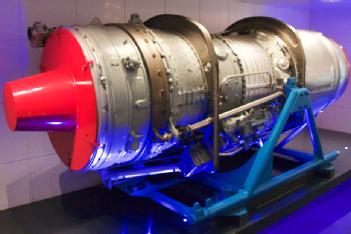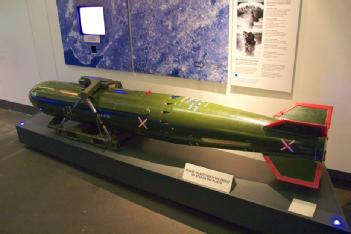
Imperial War Museum - IWM North |
M17 1TZ Manchester, Great Britain (UK) |
|
| Address |
The Quays
Trafford Wharf Road |
| Floor area | 3 500 m² / 37 674 ft² |
|
Opening times
|
every day: 10am - 5pm; 24 - 26 December closed | ||||||||
|
Status from 03/2024
|
Free entry. | ||||||||
| Contact |
|
||||||||
| Homepage | www.iwm.org.uk/visits/iwm-north | ||||||||
| Location / Directions |
By train: Plan your journey to central Manchester train stations and continue by tram. By tram IWM North is easily accessible via the tram. Metrolink offers fast, frequent and fully accessible transport to and from Manchester city centre. Take either the Eccles line to MediaCityUK and walk across the footbridge to reach the museum. Or for a faster route from the city centre, take the intu Trafford Centre line to Imperial War Museum. |
| Description | From Wikipedia, the free encyclopedia (2024): Exhibitions In addition to the physical exhibits, the walls of the gallery space are used as screens for the projection of hourly audiovisual presentations called the Big Picture, which explore themes related to modern conflict. These presentations use up to 1,500 images from the Imperial War Museum's photograph archive and were originally projected from 60 synchronised slide projectors mounted throughout the space. In 2011 digital projectors were installed, allowing a greater degree of flexibility. The images are complemented by personal accounts from the museum's oral history sound archive. The Big Picture was devised after the reduction in the museum's budget forced the scrapping of the previous exhibition plan by designers DEGW and Amalgam. With some seeing one of the museum's shortcomings as a lack of artefacts, the projections and the building itself are now the main attractions. Also within the earth shard, a separate gallery accommodates a programme of temporary exhibitions. These have included the Witness series of art exhibitions from the museum's collection, examining First and Second World War art, and the work of female war artists. The WaterWay, a passageway linking the earth and water shards, is used for smaller art or photographic exhibitions, such as Ghislaine Howard's photojournalism-inspired painting series 365. Outside the museum building, an ex-Iraqi Army T-55 tank was put on display at the main entrance in August 2008. This vehicle was captured by the Royal Engineers during the opening stages of the Iraq War in 2003.[33] The spot had previously been occupied by an Iraqi ZSU-23-4 Shilka anti-aircraft gun. Captured by the Royal Artillery after the 1991 Gulf War, it was moved from Imperial War Museum Duxford and displayed to mark the museum's fifth anniversary in July 2007. |
| Description (other) |
Locations of Imperial War Museum Imperial War Museum - IWM London Imperial War Museum - IWM Duxford |
[dsp_museum_detail.cfm]
| Data Compliance | More Information |

 iwm.org.uk
iwm.org.uk 